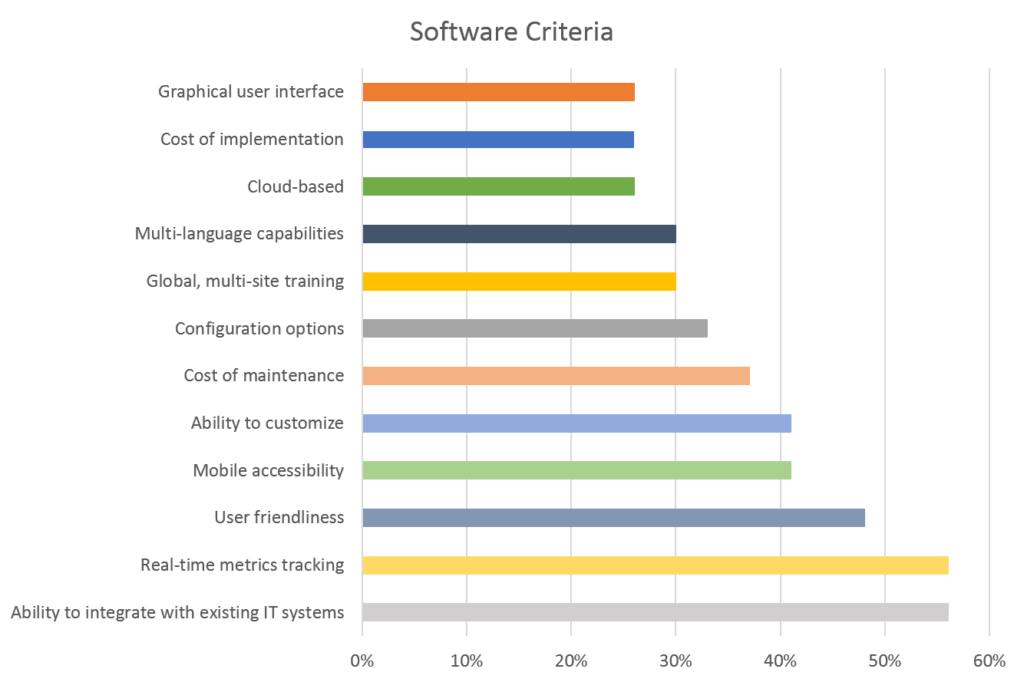
Technology Enabled Business Solutions
Comments: No Comments
This is the first in KTL’s series of articles about Technology-Enabled Business Solutions.
It goes without saying that change is hard. Even positive change for the better is not without challenges. Change when it comes to Information Technology (IT)/software systems can be flat out painful because of the significant investments of time, money, and resources required. That is why many companies choose to avoid making a change until absolutely necessary.
How do you know when that time has come? How do you know when you are investing more in your compliance Information Management System (IMS) than you are getting out of it? What are those hot buttons that drive companies to seek a system change? And when seeking a new compliance IMS, what do you look for to ensure it will meet your business needs?
Why Companies Seek New Systems
According to a March 2019 survey conducted by the National Association for EHS&S Managers (NAEM) entitled Why Companies Replace Their EHS&S Software Systems, the following is the rank order of key reasons why companies seek a new IMS:
- Current system doesn’t perform as advertised.
- New business objective(s) aren’t supported by the current system.
- Current system costs too much to maintain.
- Current system doesn’t integrate well with other business IT systems.
- Platform being used has changed.
Criteria for New Systems
These reasons tie directly to what companies in the NAEM survey say are the most important criteria when shopping for a new software system:

Let’s review a few of these top criteria and why they are so important in any decisions made about implementing a new compliance IMS. We will dig deeper into these reasons throughout our series of articles on compliance information management solutions.
Integration
As indicated by the NAEM survey, it can be a real challenge to integrate technology, whether it is with hardware, other compliance/certification software, ERP software, global systems, legacy systems, human resources systems, financial/inventory systems, etc. When it comes to having multiple systems, it’s not that you necessarily need one system to manage every business function. However, you do need your systems to talk. Lack of integration can contribute to duplication of effort, data inaccuracy, and business inefficiencies across multiple departmental functions.
Real-Time Metrics Tracking/Mobile Accessibility
With today’s technology, we are accustomed to instant gratification. There should be no reason why your IMS cannot provide that when it comes to real-time metrics tracking. Mobile accessibility allows for data to be collected on-the-go rather than re-entering information from the field back in the office. Data can be collected and compiled in real-time for review and analysis, as well as more sophisticated predictive analytics. Dashboards and reporting capabilities provide insights into system health, operational results, and business performance for senior management. A standardized approach for reporting further creates accountability and ongoing performance monitoring and measurement.
User Friendliness
What does it mean to be user friendly? Is that focused on the end user entering data in the field? Does it pertain to management who is reading reports and metrics? Are we talking about the system administrator? A truly user-friendly system will be something that meets the needs of all parties. If employees are frustrated by lack of understanding, if the system isn’t intuitive enough, if it is hard to put data in or get metrics out, the system will hold little value. In fact, according to NAEM, if a system isn’t user-friendly, employees may end up using workarounds that create more inefficiencies and inaccuracies.
Customization, Updates & Maintenance Costs
Perhaps the functionality was oversold, perhaps the system cannot handle your data in the ways you anticipated, perhaps the solution you need requires additional customization that you did not anticipate. Whatever the case, not getting what you paid for is an exercise in frustration and a waste of resources. Business priorities and objectives change. If your system cannot adapt to these changes, users will fail to engage, and it will become obsolete. At the same time, if you continually seek customization, it can come at a price—not just for the customization but for the expertise required to maintain a customized solution. Customization can quickly become a money pit that you cannot climb out of. The key is to find an IMS that is simple and adaptable to respond to business changes.
Simple Solution
It’s not uncommon to think more is better when it comes to software. However, as robust as most companies want their compliance IMS to be, a simple and adaptable solution is often the best approach. According to the NAEM survey, some software experts are helping to migrate clients away from commercial systems to basic tools such as Microsoft Office 365 and SharePoint, which can be easier to understand, easier to use and navigate, and easier to adapt to ongoing business needs.
The next article in our series will explore the idea of going back to basics and leveraging familiar tools like Office 365 to meet compliance IMS and overall business needs.
